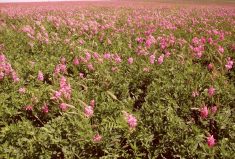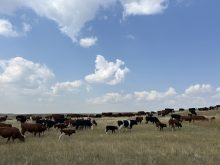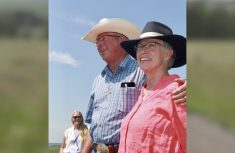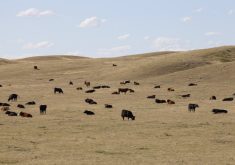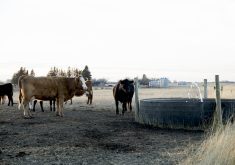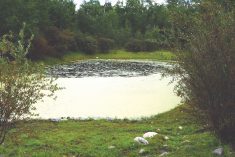This spring’s dry weather means ranchers will want to keep an eye on water quality during the grazing season.
High sulphate levels in water bind trace minerals in cattle’s rumens, leading a range of problems including diarrhea, poor growth and reduced fertility. In 2017, high sulphate levels contributed to the death of 200 cattle on pasture at Shamrock, Sask.
Hot, dry weather ups the risk. As water evaporates, concentrated sulphates are left behind, says Leah Clark, provincial cattle specialist with Saskatchewan Agriculture. “Without recharge and rain, we’re getting that concentration effect even more than ever, so testing is now more important than ever.”
Read Also

What to know before you go to Agribition 2025
If you’re attending Agribition 2025, this is the place to find out about tickets, dates and what’s happening this year.
Producers may notice several symptoms that typically indicate trace mineral deficiencies, such as a lightening hair coat and foot problems. Producers may also notice immunity issues, such as more cases of pink eye. Sometimes those issues point to water quality, says Clark.
A big warning sign is low water consumption. In hot temperatures, a cow’s water requirements are high — perhaps double or even triple requirements in colder months, says Clark. Given the hot weather and recent run with water quality, producers should note whether cattle are going to water, especially in southern Sask, she says.
Clark and her colleagues have been testing around the province. Anecdotally, water quality at the beginning of this summer was lower than the previous two years, she says. Barring plenty of rain, water quality will likely decline through the summer as more water evaporates and minerals concentrate.
“So now more than ever, it’s really important to check where those levels are.”
Saskatchewan livestock producers can send in water samples for free testing through regional offices. Clark says they need to a litre of water for the sample. It doesn’t have to be stored in a specific way, although producers should avoid temperature extremes. Livestock and feed extension specialists at the regional offices will forward the sample and help producers interpret results.
Clark says the time frame for results will depend on how many samples are sent to the lab. Producers should plan on a two-week turn-around, although it may be quicker. She suggests sending in water samples during pasture rotation planning, allowing time to make management decisions based on the results.
Provincial livestock and feed extension specialists, along with the University of Saskatchewan’s Dr. Greg Penner, are studying sulphates in livestock water supplies at the Livestock and Forage Centre of Excellence near Saskatoon, Sask. Clark says they’re hoping to release results by August at the latest. Preliminary results will be available at the Livestock and Forage Centre of Excellence’s field day on June 18.




